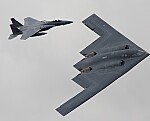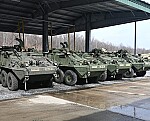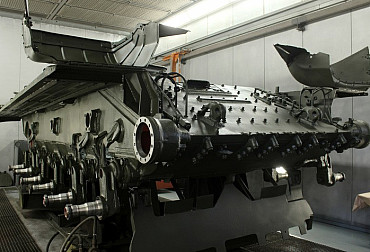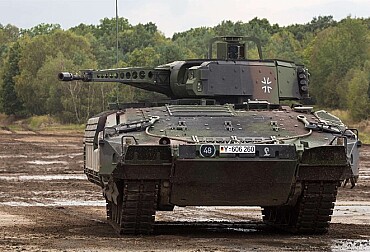South Korean deterrence strategy against North Korea
Due to the threat from the Democratic People's Republic of Korea (DPRK), the Republic of Korea (ROK) must develop a defence and deterrence strategy intended to keep the threat from the north at bay. This strategy was previously known as the 'Three Axis system'.
The DPRK views the United States as its primary threat. The ROK and Japan are viewed as allies of the United States and an extension of the threat. The main objective of the DPRK security strategy is the survival of the regime under the rule of the Kim family and the maintaining of influence on the Korean Peninsula. The DPRK regime uses both nuclear and conventional capabilities to force the ROK and the United States to make a decision that is beneficial to the North. DPRK Strategic Forces possesses a wide spectrum of ballistic missiles with various ranges. These are mainly road-mobile missiles. DPRK also has submarine-launched ballistic missiles and intercontinental ballistic missiles.
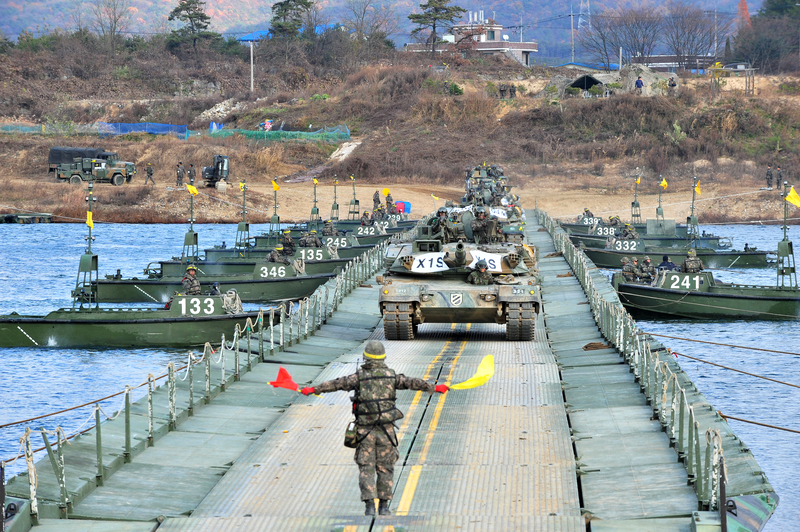
Due to this threat, the ROK needed to develop countermeasures. The military-political leadership of the ROK developed a deterrence strategy formerly known as the Three Axis System comprised of the Kill Chain, Korean Air and Missile Defence, and Massive Retaliation and Punishment. However, in 2019, the ROK Ministry of Defense changed the name to “System for responding to nuclear weapons and weapons of mass destruction “. The new axes“ are Strategic Target Strike (formerly Kill Chain), Korean Missile Defense (formerly Korean Air and Missile Defense), and Overwhelming Response (formerly Massive Retaliation and Punishment).
However, the new name is only a minor change and the strategy is still based on the three main axes. The Strategic Target Strike axis consists of massive strike against DPRK ballistic missiles and other weapons of mass destruction if the launch is imminent to launch a preemptive strike to destroy those weapons and avert the DPRK strike. This axis should become fully online in mid 2020s and be able to conduct the preemptive strike within approximately 30 minutes from detection. However, ROK does not have any reconnaissance satellite and thus is dependent on the United States regarding satellite and other coverage of potential DPRK preparations for missile launches. The ROK was restricted to develop and deploy robust missiles and space capabilities until 2021. After the United States lifted those restrictions, the ROK started to develop its own satellite capabilities and intends to launch its own satellite at the end of this year and complete the launches by 2025 with four more surveillance satellites.
The Korean Missile Defence axis serves as a backup in case of failure of Strategic Target Strike. Korean Missile Defence consists of layered air and missile defence intended to protect the ROK from ballistic missiles launched from the north. This axis is built on Patriot, Chenguang SAMs (Surface-to-air missiles) and THAAD (Terminal High Altitude Air Defence) to cover altitudes above 40 kilometres. However, the arsenal of DPRK ballistic missiles is becoming modern with the hypersonic Hwasong-8 missile and is challenging for Korean Missile Defence. Together with the Strategic Target Strike, Korean Missile Defence is based on the theory of deterrence by denial, which seeks to convince the opponent not to take action because those actions will not bring any positive result for the opponent.
The third axis is called the Overwhelming Response, and it is based on the theory of deterrence by punishment. It aims to strike Pyongyang and other command and control places in the event of nuclear or conventional attacks against the ROK. It also aims to destroy alleged Kim Jong Un hideouts, including underground targets. ROK Armed Forces could deploy surface-to-surface ballistic missiles K239 Cheonmu and ATACMS to strike targets up to 300 km away, air-launched AGM-84 SLAM-ER missile and bunker buster bomb GBU-28 which is reportedly capable of penetrate 6 m of concrete.
Although all three axes make sense, there is ongoing debate whether deterrence by denial is a sufficient strategy for the ROK due to DPRK modernisation and acquisition of hypersonic missiles and other potentially nuclear delivery systems. Especially missiles launched from submarines pose a great threat to the ROK. Therefore, it is questionable whether Strategic Target Strike and Korean Missile Defence could play a major role in deterrence efforts against the DPRK or ROK Armed Forces should focus more on Overwhelming Response and even make it a main part of their deterrence strategy against North threat.



